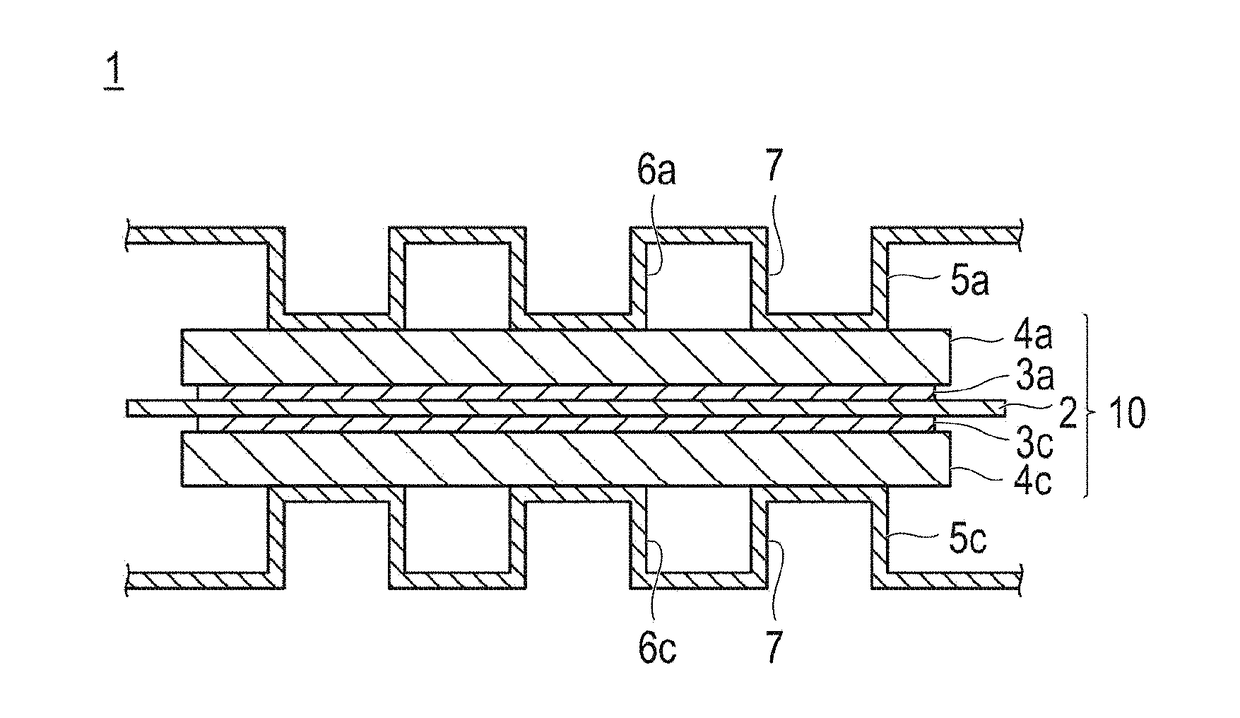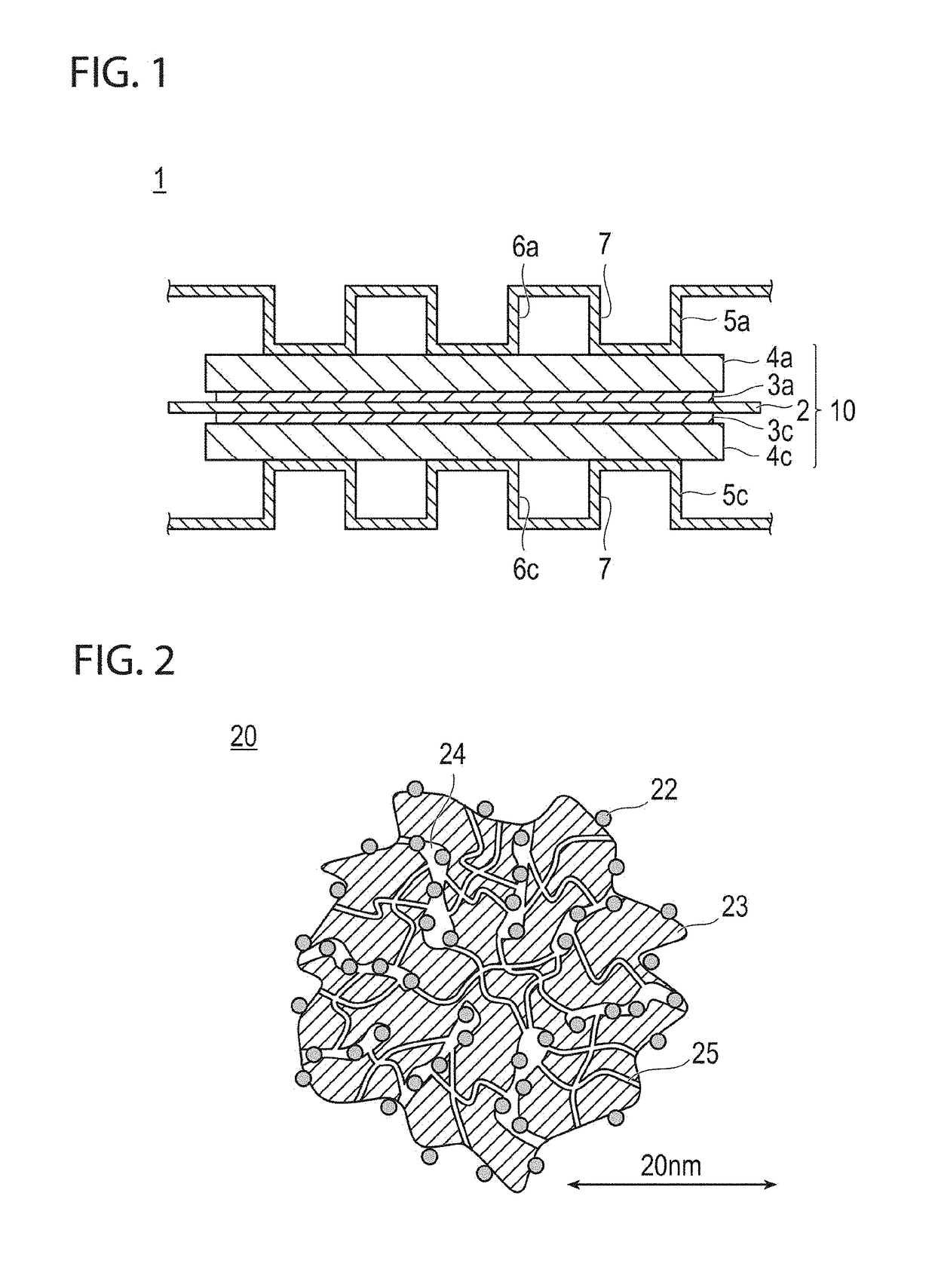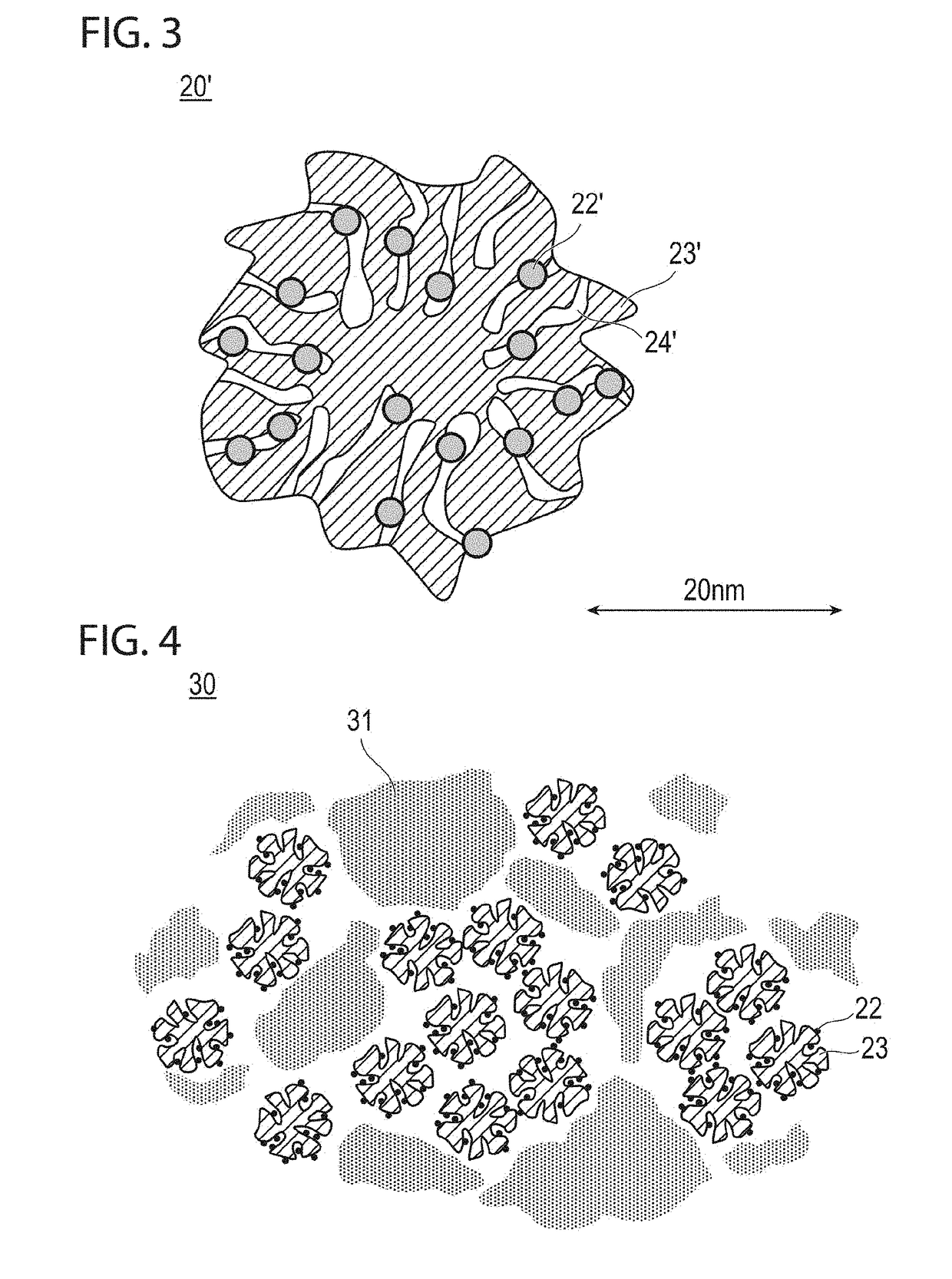Fuel cell electrode catalyst layer and manufacturing method therefor, and membrane electrode assembly, fuel cell, and vehicle using catalyst layer
- Summary
- Abstract
- Description
- Claims
- Application Information
AI Technical Summary
Benefits of technology
Problems solved by technology
Method used
Image
Examples
example 1
[0183]A carbon material 1 was prepared according to the method described in WO 2009 / 75264 A. The obtained carbon material 1 was heated at 1800° C. for 5 minutes under an argon gas atmosphere to prepare a carrier A.
[0184]The BET specific surface area of the carrier A obtained as above was 1200 m2 / g carrier. Further, the primary particle size (diameter) of the carrier A was 200 nm or less.
[0185]The carrier A was used and platinum (Pt) with an average particle size (diameter) of 3.2 nm was carried as a catalyst metal on this carrier A such that the carrying rate became 50% by weight, thereby obtaining a catalyst powder A-1. That is, 46 g of the carrier A was immersed in 1000 g of a dinitrodiammine platinum nitric acid solution with a platinum concentration of 4.6% by mass (platinum content: 46 g) and the mixture was stirred, then 100 ml of 100% ethanol was added as a reducing agent. This solution was stirred and mixed at a boiling point for 7 hours so that platinum was carried on the c...
example 2
[0193]The cathode catalyst ink containing the catalyst powder A-2 was subjected to a disintegration treatment to obtain a catalyst powder A-2′. That is, the cathode catalyst ink was subjected to the disintegration treatment with a sand grinder (AIMEX Co., Ltd., BSG-04) using zirconia particles (average particle size (diameter): 1.5 mm) at a disc rotation number of 1500 rpm for 10 minutes to obtain the catalyst powder A-2′. Incidentally, the primary particle size of the catalyst powder A-2 was 200 nm or less and the average secondary particle size thereof was 2.1 μm. A membrane catalyst layer assembly (2) (CCM (2)) and a membrane electrode assembly (2) (MEA (2)) were obtained in the similar manner to Example 1, except that the catalyst powder A-2′ was used instead of the catalyst powder A-2. The platinum basis weight of the cathode catalyst layer is 0.20 mg / cm2, and the cathode catalyst layer contains 1.7 (mmol / g carrier) of a sulfonic acid group.
example 3
[0194]The catalyst powder A-1 was used in the preparation of the cathode catalyst ink instead of the catalyst powder A-2 in Example 1 and mixing was performed such that the weight ratio of the polymer electrolyte to the catalyst carrier became 1.3. Further, 10% by weight of an aqueous n-propyl alcohol solution was added as a solvent such that the solid content ratio (Pt+carbon carrier+ionomer) became 11% by weight, thereby preparing a cathode catalyst ink. A membrane catalyst layer assembly (3) (CCM (3)) and a membrane electrode assembly (3) (MEA (3)) were obtained in the similar manner to Example 1 except the above-described matters. The platinum basis weight of the cathode catalyst layer is 0.20 mg / cm2, and the cathode catalyst layer contains 1.9 (mmol / g carrier) of a sulfonic acid group.
PUM
 Login to View More
Login to View More Abstract
Description
Claims
Application Information
 Login to View More
Login to View More - R&D
- Intellectual Property
- Life Sciences
- Materials
- Tech Scout
- Unparalleled Data Quality
- Higher Quality Content
- 60% Fewer Hallucinations
Browse by: Latest US Patents, China's latest patents, Technical Efficacy Thesaurus, Application Domain, Technology Topic, Popular Technical Reports.
© 2025 PatSnap. All rights reserved.Legal|Privacy policy|Modern Slavery Act Transparency Statement|Sitemap|About US| Contact US: help@patsnap.com



